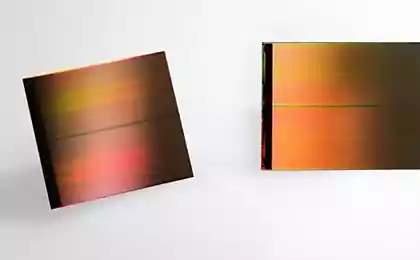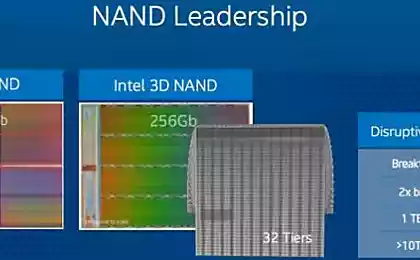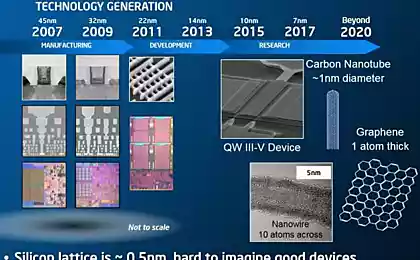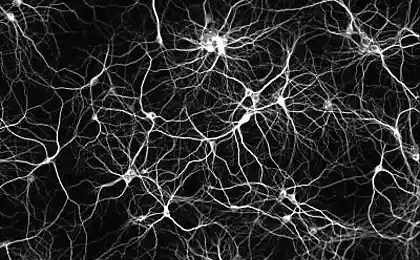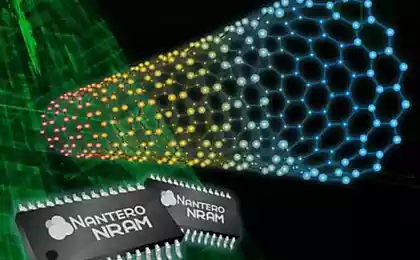841
Intel, together with Micron Technology, this year, will make a breakthrough in the non-volatile memory
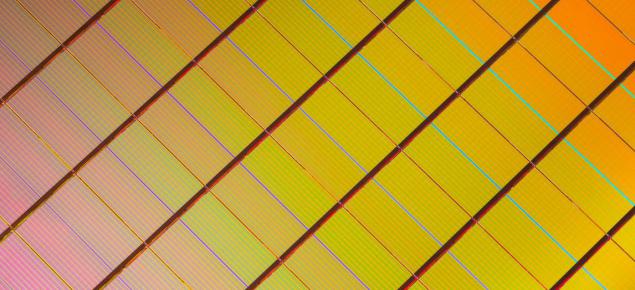
Intel and Micron Technology has officially unveiled a new non-volatile memory technology 3D XPoint, which will revolutionize the market for computing devices. 3D XPoint able to increase (up to 1300 times) performance of various types of devices, applications and services that require fast access to large volumes of data. For the first time in 26 years the memory 3D XPoint allows you to create an entirely new category of devices for storing data, changing technology NAND.
This technology is up to 1,000 times faster and has up to 1,000 times longer life compared with memory NAND. In addition, it has a 10 times higher density of components compared with DRAM memory.

Features of technology 3D XPoint: i> h4>
The cruciform structure:
Perpendicular wires combined 128 billion memory cells. Each memory cell stores one bit of data. This allows for high speed and high density.
Multi-layer
In addition to location in a cruciform structure, a memory cell arranged in several layers. The original technology allows you to store 128 GB on a single die for the two layers of memory. Future generations of technology will increase the number of layers to scale capacity.
Use the selector
DRAM memory uses trazistor in each memory cell, making it the largest and most expensive. Access and read or write in the memory cells 3D XPoint implemented by changing the voltage directed to each selector. This eliminates the need for the transistors, which increases capacity and reduces the cost.
Fast cell
Due to the small size of the cells, high-speed selectors, low latency and quick recording, the cell can switch state faster than any other non-volatile memory technology.
Advantages of 3D XPoint i>
3D XPoint technology combines the advantages of manufacturing technologies of memory available in the market. It is characterized by high performance and density components, low-power and affordable price.
The delay hard drives and NAND memory is measured in microseconds and memory 3D XPoint - in nanoseconds (one billionth of a second).
The benefits of high-speed 3D XPoint can improve comfort and general users when working with a PC.
Those who know what it is, wait 15 hours until the Autodesk Maya cache file size 400 GB, will appreciate a new kind of non-volatile memory 3D XPoint, capable of operating 1,000 times faster than conventional NAND flash memory with SSD.
Also at Intel believe that a new kind of memory, to make a breakthrough in the field of pattern recognition of different neural networks, storage and processing of huge amounts of data in the field of genomics and other fields
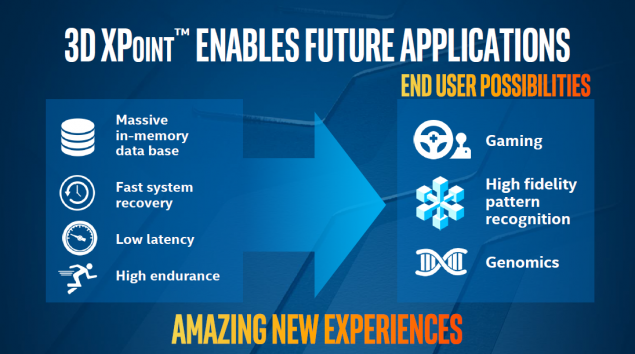
«One of the most important issues in the world of modern computing technology is the long time it takes for the processor to access the data in the storage system, - said Mark Adams, president of Micron. - A new class of non-volatile memory is a revolutionary technology that provides fast access to large volumes of data and allows you to create entirely new applications » blockquote>
Architecture i> h4>
Beztranzistornaya innovative architecture creates a three-dimensional structure of the cross on which memory cells are placed at the intersection of numerical lines and bit lines, which allows for an independent right to perform addressing. As a result, data can be written and read in small sizes, which leads to faster and more effective process of reading / writing.
The first deliveries of 3D XPoint
Trial delivery of products based on the technology 3D XPoint for individual customers will begin later this year. In addition, Intel and Micron develop their own products based on this technology.
Presentation of memory technology 3D XPoint
Source: geektimes.ru/post/259576/
How to make a compelling parking gaming company (approved by the Black Mesa)
The short life of the tallest man in history


